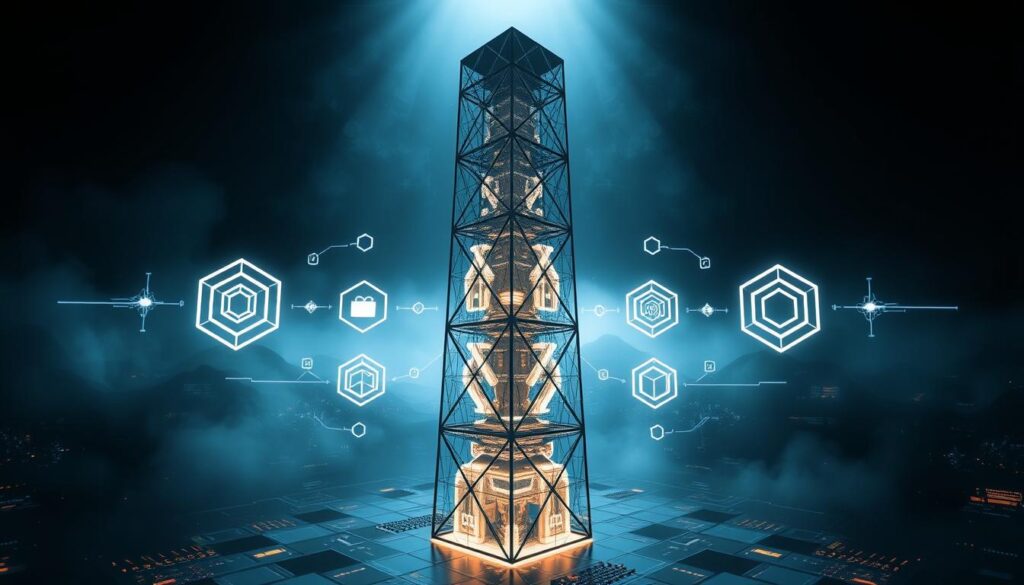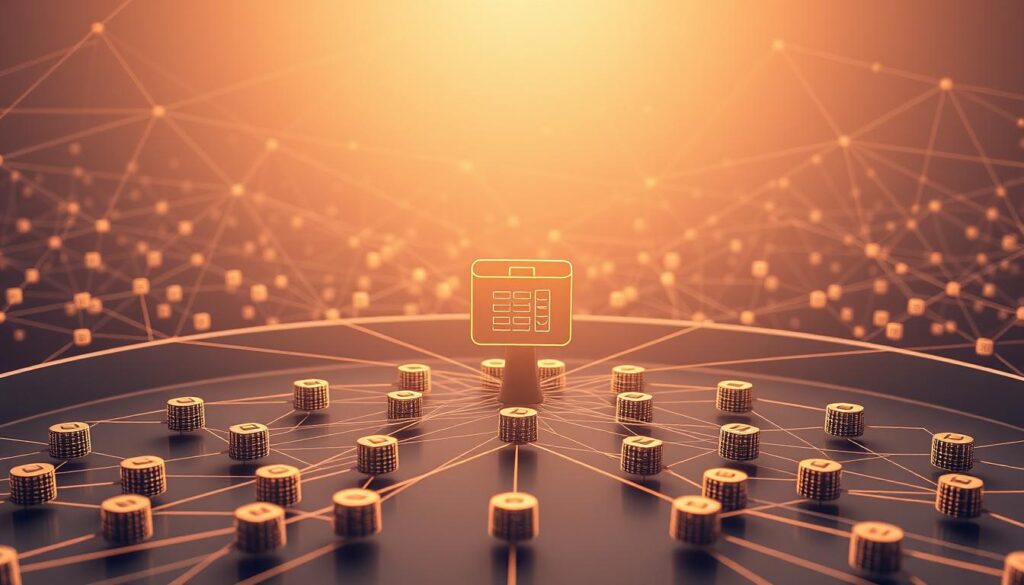Now Reading: Leveraging Blockchain to Create Positive Social Impact
- 01
Leveraging Blockchain to Create Positive Social Impact
Leveraging Blockchain to Create Positive Social Impact
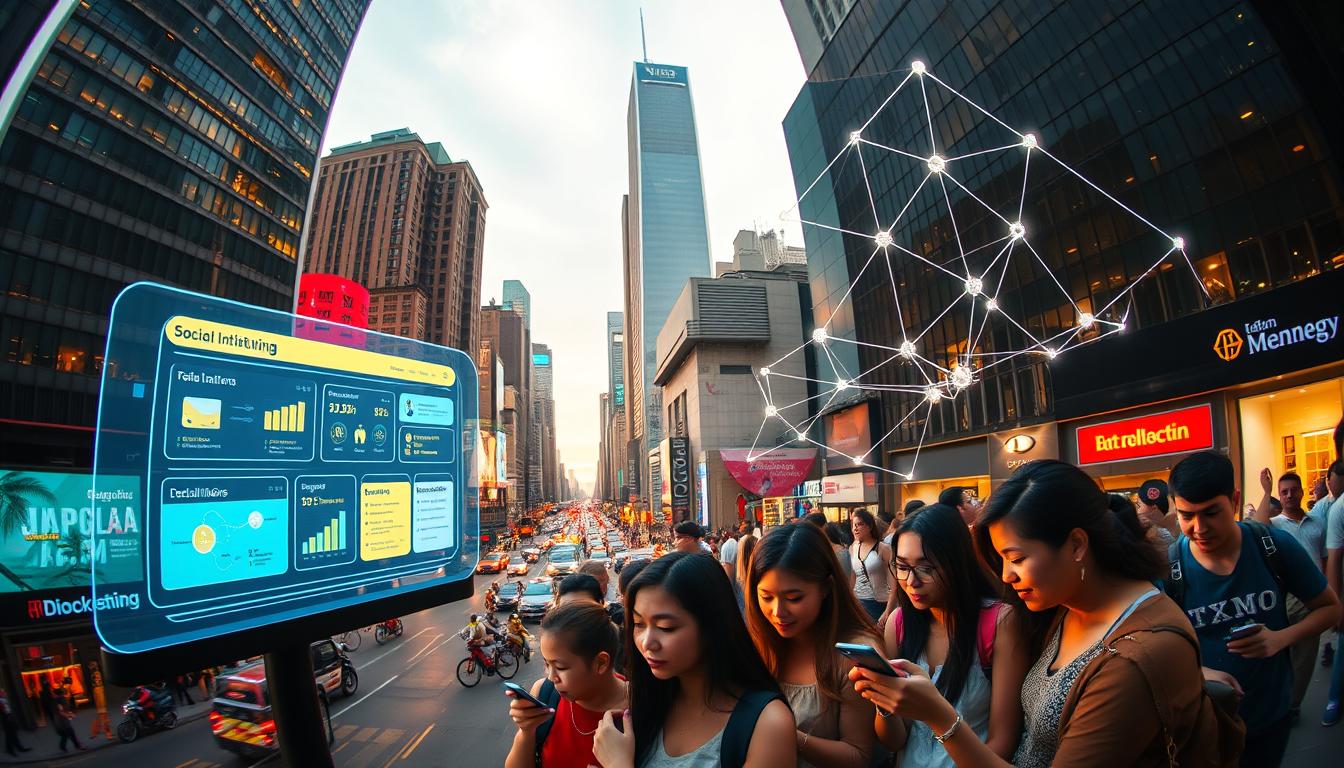
Blockchain technology is changing how we tackle global problems. It makes systems secure and open, helping in areas like aid, environment, and money access. This tech’s unique setup lets us trust data and systems without needing intermediaries.
Blockchain is now used for more than just money. It helps solve big issues like fake donations and wasted resources. This article shows how blockchain fixes these problems, making sure help reaches those who need it most.
Key Takeaways
- Blockchain technology enhances transparency and reduces fraud in social initiatives.
- Blockchain for social impact fosters direct connections between donors and beneficiaries.
- Blockchain innovation supports measurable outcomes in humanitarian projects.
- Decentralized systems empower marginalized groups through secure digital identities.
- This guide outlines actionable steps to implement blockchain in social enterprises.
Understanding Blockchain for Social Impact
Blockchain is more than just for cryptocurrencies. It has a big role in blockchain for social impact projects. This system is a decentralized ledger that keeps data safe and unchangeable. This is key for groups working on social good.
What Makes Blockchain Uniquely Suited for Social Good
- Decentralization cuts out middlemen, saving money and time.
- Immutability means records like donations are safe from tampering.
- Transparency lets everyone see transactions as they happen.
The Evolution of Social Impact Technologies
Old methods used paper and central databases, open to fraud. Social good blockchain has changed this. It uses smart contracts and tokens to automate and secure aid and education funding.
Key Blockchain Features That Drive Positive Change
Smart contracts make sure agreements are followed without human error. For example, money goes to schools only after they’re built. Tokens create new currencies, and consensus makes sure everyone agrees. These features turn big ideas into real actions, making blockchain for social impact projects real.
The Current State of Blockchain in Social Innovation
Today, blockchain for social good is a mix of early tests and real uses. Blockchain innovation supports social impact projects blockchain tackling issues like food aid and identity rights. Platforms like Ethereum and Hyperledger Fabric are key, powering many systems. The United Nations World Food Programme uses blockchain to track aid in places like Jordan and Pakistan.
Groups like the Blockchain for Social Impact Coalition and NGOs like GiveDirectly use blockchain solutions for better transparency and efficiency. Trends include:
- Shift from pilots to scaled systems, such as digital ID programs in India and Ghana
- Institutional partnerships between tech firms like Microsoft and nonprofits
- Emerging standards for interoperability and data privacy frameworks
But, there are still challenges. Technical issues like high energy use in old protocols and adoption in low-tech areas slow progress. Also, unclear rules for cross-border projects add complexity. Despite this, blockchain innovation shows great promise. Its full effect depends on overcoming these hurdles. Yet, success stories show it can make a difference when it meets community needs.
How Blockchain Transforms Traditional Philanthropy
Blockchain is changing how we give to charity. It makes sure every dollar donated is tracked and can’t be changed. This builds trust and makes sure money goes where it’s needed most through 
Enhanced Transparency in Charitable Donations
Blockchain brings clear tracking to donations. Donors can see where their money goes in real time. For example, the BitGive Foundation’s GiveTrack lets users watch donations go to projects like wells in Kenya.
This openness cuts down on scams and boosts trust among donors.
Reducing Administrative Overhead
- Smart contracts do tasks like sending payments, saving up to 30% in costs.
- Charities like GiveCrypto send 95% of donations straight to those who need it, cutting out middlemen.
Direct Donor-to-Beneficiary Connections
Platforms like AidCoin let donors send crypto directly to those in need. This cuts down on fees and speeds up help. In 2023, blockchain helped send aid to Pakistan’s floods 60% faster than usual.
Measuring Real Impact with Blockchain Verification
Blockchain’s data is permanent and can be checked. The United Nations uses it to track food aid in Syria. Now, they can show exactly who got help and how much.
Essential Blockchain Technologies Powering Social Change
Effective blockchain solutions use different technologies for various challenges. Public blockchains like Ethereum, Solana, and Cardano offer open platforms. They support decentralized apps (dApps) for tasks like microfinance and voting systems.
These blockchain innovations bring transparency. Yet, their energy use and costs can be a problem in areas with less resources.
Enterprise blockchains, like Hyperledger Fabric, are great for groups working together. They have permissioned networks that cut down on fees while keeping things private. This makes them good for tracking supplies or sending aid.
Layer-2 solutions, like Polygon for Ethereum, also help. They make things cheaper and faster, which is key in places with slow internet.
- Public blockchains: Ethereum’s smart contracts automate donations; Solana’s fast transactions support real-time aid tracking.
- Layer-2 scaling: Solutions like Optimism enable low-cost microtransactions for education or healthcare programs.
- Specialized protocols: Blockchain technology frameworks like AidCoin streamline disaster relief funding, ensuring funds reach beneficiaries directly.
Choosing the right blockchain innovation is all about finding the right balance. Public chains are open but might not be customizable. Private networks offer control but lose some decentralization.
Energy-efficient options, like Cardano’s Ouroboros, help with sustainability. Developers need to pick technologies that fit their project goals. This ensures solutions work well in different places.
Practical Steps to Launch a Blockchain for Social Impact Project
Starting blockchain solutions for social good needs careful planning. First, check if a social issue really fits blockchain’s strengths. Ask if the problem is about trust, transparency, or working together. Blockchain should offer more than old ways do.
- 1. Define the problem: Identify issues like supply chain fraud or aid problems where blockchain for social impact can help. It can make systems that are sure and can’t be changed.
- 2. Build interdisciplinary teams: Mix blockchain experts with people from the field (like healthcare workers for tracking medical supplies).
- 3. Choose platforms wisely: Pick between Ethereum for smart contracts or Hyperledger for private networks based on your needs.
- 4. Secure funding: Look for grants from places like UNICEF’s Innovation Fund or team up with companies.
- 5. Set measurable goals: Track things like how fast aid gets delivered or if people really get what they’re supposed to. Use blockchain’s permanent records for this.
Make sure your project can grow and people will use it from the start. Pick projects where blockchain makes a big, lasting difference. This way, your idea can become a real social impact project blockchain that makes a real difference.
Building Transparent Supply Chains with Blockchain
Blockchain is changing how we track goods from start to finish. It makes sure products are made fairly and safely. For example, coffee farmers in Ethiopia can show their work is done right through blockchain.
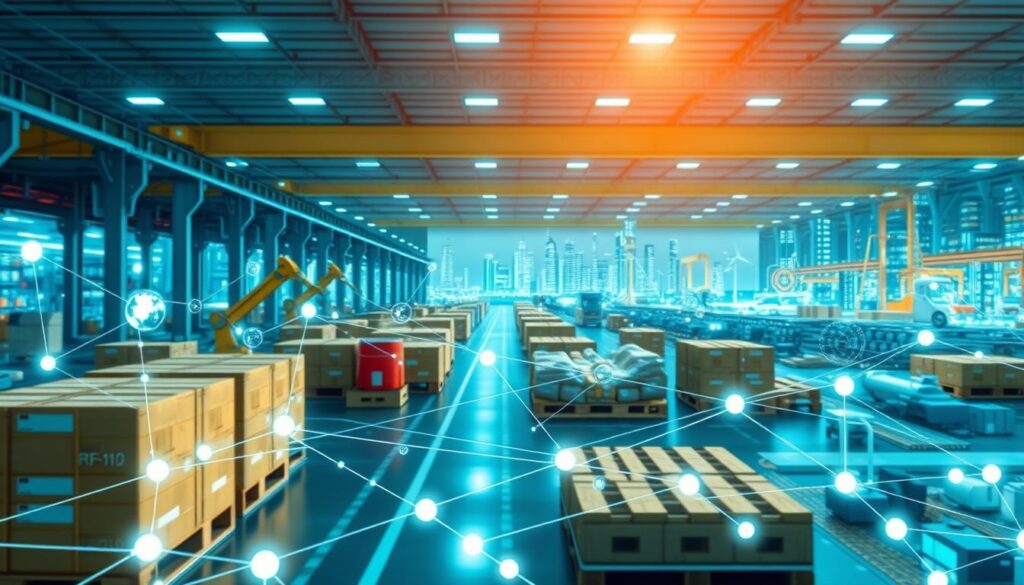
Everledger is fighting against slavery by tracking diamonds and minerals. It shows where each item comes from, stopping bad practices. This helps keep fashion and electronics safe from exploitation.
- Ethical Sourcing Verification: Smart contracts check if products meet standards, keeping work and environment safe.
- Environmental Impact Tracking: Systems like IBM Food Trust track carbon and waste. This helps companies like Patagonia reduce harm to the planet.
But, there are still problems like wrong data at the start. Yet, tools like Provenance help fix this. They make sure data is right, helping farms and factories work better together.
Using blockchain makes it easier to follow UN goals for a better world. It shows that doing good and making money can go hand in hand.
Blockchain Solutions for Financial Inclusion
Blockchain technology is changing how people get financial services. It helps those who can’t use traditional banks. Digital identity systems on blockchain verify users without needing passports or bank accounts.
Peer-to-peer payment networks make sending money cheaper, costing just 1-3%. This is much less than the 6.5% global average. Platforms like Stellar and Ripple make transfers fast and cut costs.
Microfinance platforms like Ethos and Kiva use smart contracts. They match investors with entrepreneurs quickly, without delays.
- Decentralized lending platforms issue loans in seconds, bypassing credit checks.
- Stablecoins pegged to USD or commodities protect savings in nations with hyperinflation, such as Venezuela’s Petro coin initiatives.
- Community savings groups use blockchain ledgers to track contributions and withdrawals transparently.
But, there are still challenges. Only 34% of adults in developing regions have internet access. This limits how many can use these services. Governments must find the right balance between rules and innovation.
Training programs in Ghana and India show digital literacy boosts adoption by 40% in 6 months. These blockchain solutions are changing the game. They offer a new way to participate in the economy. As more people learn about them, they could become key for financial equality worldwide.
Impact Investing Blockchain Applications
Blockchain is changing impact investing by making it easier for social projects to get funding from around the world. Now, digital tokens help represent investments in things like green energy or education. These impact tokens make it simple to see how well investments are doing.
Tokenizing Social Impact Investments
Tokenization makes big projects smaller and easier to invest in. For instance, solar farms can be funded with tokens, allowing people to own a piece of them. This makes impact investing blockchain a way for more people to help make a difference.
Creating Accessible Investment Opportunities
Blockchain lets people invest small amounts in real projects. Sites like community-driven energy grids or education funds use smart contracts. This makes it cheaper and easier for more people to invest in change.
Measuring and Reporting Social Returns
Blockchain keeps a record of every transaction and outcome, like clean energy or jobs. Investors can see how their money is being used. Tools automatically report on progress, making sure claims are true.
- Carbon credit tokens track emissions reductions
- Impact bonds with social outcome milestones
- Community-driven investment pools with transparent ROI
Sustainable Development Goals and Blockchain Technology
Blockchain technology is a new way to reach the United Nations’ Sustainable Development Goals (SDGs). It makes systems clear for tracking resources and progress. This helps solve problems like corruption and waste.
The 17 SDGs move forward with sustainable development blockchain solutions. These ensure everyone is accountable and results are measurable.

- Goal 1 (No Poverty): Digital identity systems on blockchain grant marginalized groups access to financial services, breaking cycles of exclusion.
- Goal 12 (Responsible Consumption: Supply chain traceability via blockchain ensures ethical sourcing, advancing Goal 12’s targets.
- Goal 7 (Affordable Energy: Renewable energy credits tracked on blockchains accelerate progress toward clean energy targets.
Collaborations between governments, NGOs, and tech companies boost blockchain for social impact efforts. The UN Food and Agriculture Organization uses blockchain to track aid. This merges data from different sources into one ledger.
Success depends on matching technology with the right challenges. For example, blockchain is great for complex tasks like tracking cross-border aid. But it might be too much for simple tasks like local recycling.
Blockchain solutions focus on clear resource use. But, we need to carefully choose projects. They should solve real problems, not just use new tech. When used right, blockchain helps us move toward a more equitable and sustainable world.
Case Studies: Successful Blockchain for Social Good Projects
Real-world blockchain solutions are changing social systems. These examples show how blockchain tackles global problems with proven models.
Four projects highlight blockchain for social impact success:
- World Food Programme’s Building Blocks improved aid to Syrian refugees. It replaced cash with biometric vouchers, saving 98% and reducing fraud. Now, it handles over 10 million transactions a year, despite early tech issues.
- Power Ledger set up peer-to-peer energy trading in Australia. It lets homes trade solar energy, reducing fossil fuel use. Over 500 homes use it, showing blockchain’s role in green energy.
- ID2020 Alliance gave digital IDs to stateless people. Blockchain-secured IDs opened healthcare and banking for 1.1 million. Overcoming education hurdles, they trained communities.
- Humaniq introduced local currencies in Kenya and Ukraine. Their platform helped 500+ businesses trade with community tokens, boosting local economies by 20%. Local government partnerships boosted adoption.
These examples prove social impact projects blockchain work when they meet community needs. Each balances new ideas with practical use, showing blockchain’s power to fix big problems.
Navigating Regulatory Challenges in Social Impact Blockchain
As blockchain for social impact grows, organizations face complex regulatory hurdles. Blockchain technology’s decentralized nature often clashes with traditional legal frameworks. This creates uncertainty for social impact projects blockchain. Understanding these challenges is critical to ensuring compliance without stifling innovation.
Key regulatory hotspots include cryptocurrency regulations impacting financial inclusion programs, data privacy laws governing identity systems, and securities rules affecting tokenized investments. For instance, GDPR compliance becomes vital when storing beneficiary data on blockchains. Meanwhile, countries like Switzerland offer supportive sandboxes, while others impose strict cryptocurrency bans.
- Research jurisdiction-specific rules before launching cross-border projects
- Consult legal experts familiar with blockchain’s unique technical and legal nuances
- Design protocols that align with anti-money laundering (AML) standards
Nonprofits must also navigate donor restrictions and IRS guidelines when using blockchain for charitable work. Proactive engagement with regulators through pilot programs can clarify expectations. Transparent documentation of blockchain’s immutable audit trails helps demonstrate compliance to skeptical authorities.
Adopting modular smart contract systems allows real-time regulatory updates. Organizations like the UN’s ID2020 use this approach to balance innovation with legal requirements. Prioritizing regulatory agility ensures social impact projects blockchain remain viable while advancing their missions.
Building Community Engagement Around Your Blockchain Initiative
Building trust in your community is key for blockchain projects aimed at social good. Without people actively involved, even the most advanced tech can’t make a difference. Success comes when you focus on people, not just code.
Creating real connections is crucial. It ensures your project meets real needs, not just technical possibilities.
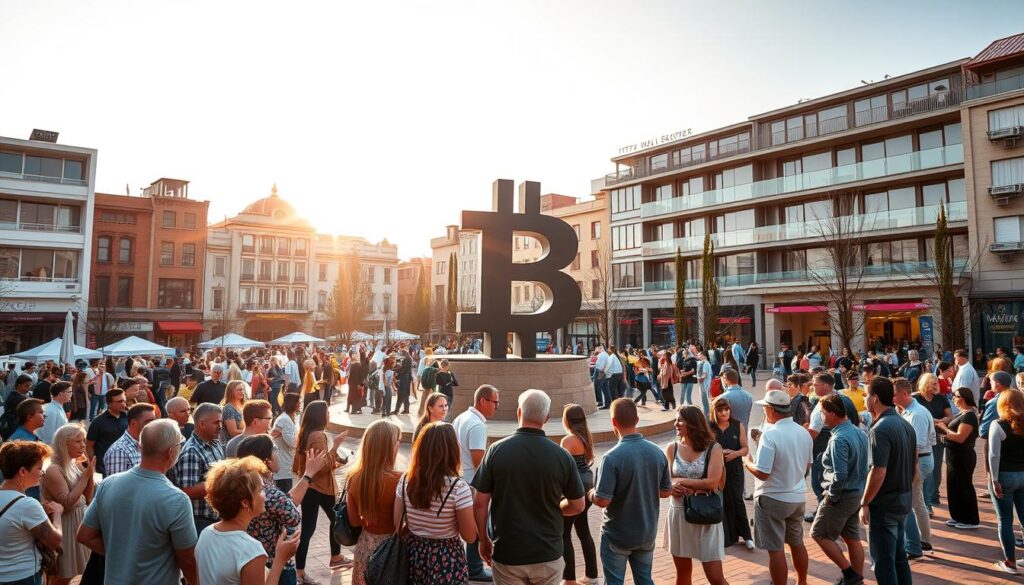
Education and Awareness Campaigns
Start by making blockchain easy to understand. Here are some strategies:
- Host town halls and online sessions to explain how blockchain works.
- Work with schools and NGOs to create content in many languages.
- Share success stories, like blockchain proving fair wages, to show its value.
Creating Inclusive Governance Models
Decentralized governance lets communities shape their future. Here’s how to do it:
- Use mobile-friendly platforms for voting, so everyone can participate.
- Hold regular town halls to get feedback on project plans.
- Make sure everyone, especially those who are often left out, has a say.
Incentivizing Participation
Offer rewards that go beyond money. Here are some ideas:
- Publicly recognize volunteers for their contributions.
- Offer access to important services like healthcare or education.
- Give out tokens for achievements, like clean energy produced.
Engaging your community is what makes blockchain a force for change. Social good blockchain projects succeed when they listen, adapt, and value every voice.
Measuring the Real-World Effects of Blockchain Solutions
Measuring the success of blockchain transparency needs clear metrics. These metrics should show how tech achievements help people. Social impact projects using blockchain often face challenges in proving their worth. But, new ways to measure are emerging.
Measuring starts with collecting data before using blockchain. For example, food aid programs can track how fast food is delivered or how much fraud is reduced. Blockchain’s public ledgers let auditors check transactions live, making sure everything is correct without manual checks.
- Automated data validation using smart contracts
- Community-reported outcomes via decentralized apps
- Third-party audits of blockchain transaction records
It’s hard to say how much a blockchain solution really helps. For example, a supply chain project might show it’s more transparent. But, it’s tough to say if it really helped workers get paid more. Mixing blockchain data with feedback from people who got help gives a clearer picture.
Big projects like the UN’s Building Block use a mix of metrics. They track how well blockchain works (blockchain metrics) and what people say about getting help. This way, blockchain is seen as a tool for change, not just for itself.
It’s important for groups to be clear about what they’ve achieved. The Blockchain for Social Impact Coalition offers tools to make reports easier to understand. By mixing data with stories of real people’s experiences, groups show they’re making a difference without exaggerating.
Common Pitfalls to Avoid When Implementing Social Blockchain Projects
Using blockchain solutions for good is more than just tech skills. Many social impact projects blockchain fail because of ignored challenges. A 2023 study showed 40% of these projects fail in two years due to avoidable mistakes.
- Ignoring problem-first design: Over 60% of failed projects started with blockchain as the solution before defining the problem. A 2022 healthcare initiative in Nigeria built a blockchain system for vaccine tracking only to realize spreadsheets were sufficient.
- Scalability traps: Blockchain technology often struggles with volume. A supply chain project in Brazil faced $15+ per transaction costs during peak usage, making it unfeasible for smallholder farmers.
- User resistance: In India’s rural regions, a digital ID project using blockchain failed because 70% of beneficiaries couldn’t navigate mobile apps without literacy support.
- Lack of sustainability: A carbon credit platform in Kenya collapsed when grant funding ended, lacking a revenue model. Successful models like Everledger‘s diamond tracking system now use royalty-based funding.
Proven solutions include starting with blockchain technology audits to confirm necessity, stress-testing scalability under real-world loads, and designing interfaces for low-tech users.
Future Horizons: Where Blockchain and Social Innovation Converge
Blockchain is changing how we make progress socially. It’s getting better with technologies like AI and IoT. For example, using IoT data with blockchain could make tracking the environment much better.
This could help solve big problems like food safety and disaster relief. It’s all about making systems more accurate and effective.
Decentralized organizations (DAOs) might change how we do social work. Places like ImpactDAO are testing new ways to fund projects. This shows blockchain can help everyone have a say.
But, we still face big challenges. We need to make blockchain use less energy. Ethereum’s move to proof-of-stake is a step in the right direction. But we need more green solutions.
Working together is key to success. The UN’s Blockchain for Sustainable Development shows how tech, NGOs, and governments can team up. It’s about using blockchain to help people and the planet.
As blockchain grows, it could help achieve UN goals. This includes funding education and tracking clean energy. But we must be careful not to lose sight of ethics and making sure everyone can use it.
FAQ
What is blockchain technology and how does it relate to social impact?
Blockchain is a system that keeps records securely and transparently. It helps in making social projects more efficient and accountable. This is true for things like helping people in need and supporting charities.
With blockchain, it’s easier to track where money goes. This builds trust and ensures that projects have the right impact.
How does blockchain enhance transparency in charitable donations?
Blockchain makes sure every donation is recorded safely and can’t be changed. This lets donors see how their money is used right away. It also cuts down on fraud, making everyone more confident in giving.
What are some practical applications of blockchain for social good?
Blockchain helps in many ways, like checking if goods are made ethically. It also lets people give directly to those who need it most. It makes charities more efficient and opens up new ways to invest in good causes.
What challenges do organizations face when implementing blockchain solutions for social impact?
Organizations struggle with making blockchain work for everyone. They face issues like making it big enough, getting people to use it, and dealing with rules. Keeping blockchain projects going long-term is also a big challenge.
How can blockchain technology contribute to sustainable development goals (SDGs)?
Blockchain helps achieve many UN Sustainable Development Goals. It makes it easier to track progress and ensures goods are made right. It also helps people get financial services who can’t use banks.
It can tackle big issues like poverty and help the environment. This is done by making sure things are done right and keeping track of clean energy.
What role does impact investing play in blockchain social initiatives?
Impact investing mixes making money with doing good. Blockchain makes it easier to invest in good causes. It lets people own a piece of something and makes it easier to sell.
This opens up new ways to invest in things that help people and the planet. It also makes it clearer how much good is being done.
How can organizations measure the impact of blockchain solutions effectively?
To measure impact, organizations need clear goals and use blockchain data. They should also get outside help to check their work. This way, they can show how well they’re doing and make sure they’re helping.
What are the future horizons for blockchain in social innovation?
Blockchain’s future in helping society looks bright. It might work with new tech like AI and the Internet of Things. It could also change how groups are run and money is spent on social projects.
This could really change how we help others and make the world a better place.



